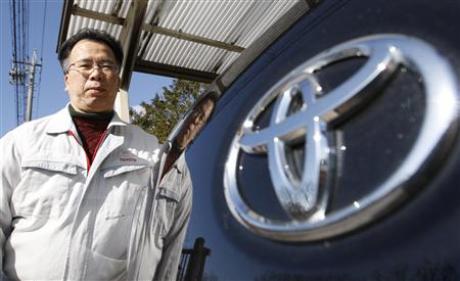Toyota Cuts Line Down To A Third

A factory that can make cars fast should be the goal of every automaker. The higher the throughput, the lower the cost. Japanese companies had for long been on the leading edge of efficient and flexible production. Now, Toyota has made a big step forward, reports Reuters.
Introduced in a new factory of Toyota subsidiary Central Motor Co, the production line is shaped like the letter “U”. It allows for more than one task to take place at once on a vehicle. The engine can be installed in the front while underbody parts are added in the back. In a way, Toyota introduced multithreading to car manufacturing that had been sequential since Henry Ford.
The new technique has shortened the assembly line length into one-third of what it would have been. Toyota also saved 40 percent on capital expenditure. When you are faced with a strong currency like the Japanese are, you can either move production abroad, or make production at home more efficient.
Toyota had said a few weeks ago that it wants to lower the break-even point of its Japanese operations by improving manufacturing processes.

Bertel Schmitt comes back to journalism after taking a 35 year break in advertising and marketing. He ran and owned advertising agencies in Duesseldorf, Germany, and New York City. Volkswagen A.G. was Bertel's most important corporate account. Schmitt's advertising and marketing career touched many corners of the industry with a special focus on automotive products and services. Since 2004, he lives in Japan and China with his wife <a href="http://www.tomokoandbertel.com"> Tomoko </a>. Bertel Schmitt is a founding board member of the <a href="http://www.offshoresuperseries.com"> Offshore Super Series </a>, an American offshore powerboat racing organization. He is co-owner of the racing team Typhoon.
More by Bertel Schmitt


































Comments
Join the conversation
Boring cars, lack of anything to set those cars apart from the rest, typical too high beltline with tiny windows, bobbling cars on windy days, brake too high in relationship to gas pedals, all FWD cars, no sweet exhaust note, not so impressive handling, and did I mention boring.
I am holding out for swarms of nanobots.
Taking the announcement at face value, what's the improvement in unit cost to be expected from this development? And is there an advantage to taking the lessons learned in this development into an existing plant?
There is a wild price competition with Hyundai. This may be a card to win. The question is, can they maintain homogenious quality? A this provides nice and cheap flexibility.